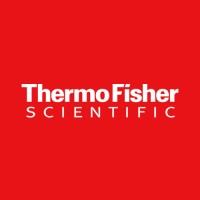IgM Secondary Antibody / DyLight 755 / Polyclonal
Product Details
| Description | Goat anti-Mouse IgM Cross Adsorbed Secondary Antibody, DyLight 755 conjugate. Thermo Scientific Pierce Anti-Mouse secondary antibodies are affinity-purified antibodies with well-characterized specificity for mouse immunoglobulins and are useful in the detection, sorting or purification of its specified target. Secondary antibodies offer increased versatility enabling users to use many detection systems (e.g. HRP, AP, fluorescence). They can also provide greater sensitivity through signal amplification as multiple secondary antibodies can bind to a single primary antibody. Most commonly, secondary antibodies are generated by immunizing the host animal with a pooled population of immunoglobulins from the target species and can be further purified and modified (i.e. immunoaffinity chromatography, antibody fragmentation, label conjugation, etc.) to generate highly specific reagents.FACS 1:25 - 1:100, ICC 1:50 - 1:2,000, IF 1:50 - 1:2,000, IHC 1:50 - 1:2,000, IP Assay Dependent, WB 1:5,000 - 1:20,000 | |
|---|---|---|
| Conjugate | DyLight 755 | |
| Clone | Polyclonal | |
| Target Species | Mouse | |
| Applications | FC, IF, ICC, WB, IP | |
| Supplier | Thermo Fisher Scientific | |
| Catalog # | Sign in to view product details, citations, and spectra | |
| Size | ||
| Price | ||
| Antigen | ||
| Host | ||
| Isotype |
About IgM
Immunoglobulins (Ig) are the antigen recognition molecules of B cells. An Ig molecule is made up of 2 identical heavy chains and 2 identical light chains (see MIM 147200) joined by disulfide bonds so that each heavy chain is linked to a light chain and the 2 heavy chains are linked together. Each Ig heavy chain has an N-terminal variable (V) region containing the antigen-binding site and a C-terminal constant (C) region, encoded by an individual C region gene, that determines the isotype of the antibody and provides effector or signaling functions. The heavy chain V region is encoded by 1 each of 3 types of genes: V genes (see MIM 147070), joining (J) genes (see MIM 147010), and diversity (D) genes (see MIM 146910). The C region genes are clustered downstream of the V region genes within the heavy chain locus on chromosome 14. The IGHM gene encodes the C region of the mu heavy chain, which defines the IgM isotype. Naive B cells express the transmembrane forms of IgM and IgD (see IGHD; MIM 1471770) on their surface. During an antibody response, activated B cells can switch to the expression of individual downstream heavy chain C region genes by a process of somatic recombination known as isotype switching. In addition, secreted Ig forms that act as antibodies can be produced by alternative RNA processing of the heavy chain C region sequences. Although the membrane forms of all Ig isotypes are monomeric, secreted IgM forms pentamers, and occasionally hexamers, in plasma (summary by Janeway et al., 2005).[supplied by OMIM, Aug 2010]
Immunoglobulins (Ig) are the antigen recognition molecules of B cells. An Ig molecule is made up of 2 identical heavy chains and 2 identical light chains (see MIM 147200) joined by disulfide bonds so that each heavy chain is linked to a light chain and the 2 heavy chains are linked together. Each Ig heavy chain has an N-terminal variable (V) region containing the antigen-binding site and a C-terminal constant (C) region, encoded by an individual C region gene, that determines the isotype of the antibody and provides effector or signaling functions. The heavy chain V region is encoded by 1 each of 3 types of genes: V genes (see MIM 147070), joining (J) genes (see MIM 147010), and diversity (D) genes (see MIM 146910). The C region genes are clustered downstream of the V region genes within the heavy chain locus on chromosome 14. The IGHM gene encodes the C region of the mu heavy chain, which defines the IgM isotype. Naive B cells express the transmembrane forms of IgM and IgD (see IGHD; MIM 1471770) on their surface. During an antibody response, activated B cells can switch to the expression of individual downstream heavy chain C region genes by a process of somatic recombination known as isotype switching. In addition, secreted Ig forms that act as antibodies can be produced by alternative RNA processing of the heavy chain C region sequences. Although the membrane forms of all Ig isotypes are monomeric, secreted IgM forms pentamers, and occasionally hexamers, in plasma (summary by Janeway et al., 2005).[supplied by OMIM, Aug 2010]
About DyLight 755
DyLight™ 755 has an excitation peak of 754 nm and an emission peak of 776 nm and is spectrally similar to Alexa Fluor™ 750. DyLight™ 755 is most commonly used in fluorescence micrscopy.
DyLight™ 755 has an excitation peak of 754 nm and an emission peak of 776 nm and is spectrally similar to Alexa Fluor™ 750. DyLight™ 755 is most commonly used in fluorescence micrscopy.
Experiment Design Tools
Panel Builders
Looking to design a Microscopy or Flow Cytometry experiment?
Validation References
Reviews & Ratings
| Reviews |
|---|
Looking for more options?
4043 IgM antibodies from over 48 suppliers available with over 130 conjugates.





